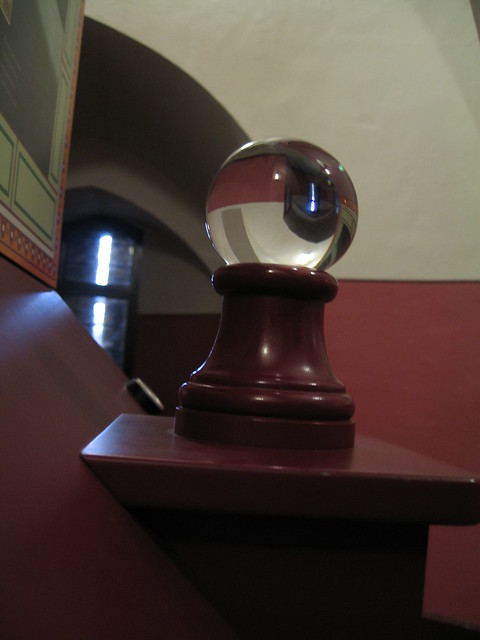The greatest asset of any brand: strategically anticipating and predicting the future
What television shows will Americans want to watch in the coming years? What kind of fashions will people want to be wearing 3 to 5 years from now? What kind of apps and capabilities will entice consumers to purchase Smart phones in the years ahead? Did Blockbuster Video anticipate and prepare for Netflix and Pay-per-view? What consequences did GM and Chrysler pay for not correctly anticipating automobiles that consumers wanted to drive? What challenges do book publishers face today because they didn’t anticipate the onslaught of less expensive eBooks just a few years ago?
Perhaps the most important, but often overlooked, aspect of brand management is in knowing what questions to ask, what problems to solve, and what issues to address that have yet to become questions, problems or issues. This “front end” of the front-end of innovation – “strategic anticipation” – is essential. And it’s essential because this process will better position companies, organizations, and individuals to survive in a market where successful products, industries, companies, and individuals (brands) can be “here today and gone tomorrow.”
Futurists
In recent history, futurology has become an integral part of business as well as other key sectors of society. Respected futurologists including Richard Worzel, Scott Klososky, Michael Rogers, and Faith Popcorn receive big bucks to methodically and systematically predict future trends so their clients can develop, protect, expand, and dominate their brands. But today, everyone must become futurists to develop, protect, expand, and dominate their brands. Brand management, not to mention mere survival, requires the brand expertly leverage the greatest asset it has… namely strategically anticipating and predicting the future – accurately and precisely. Decisions must be unassailable and timing flawless.
If you knew everything about tomorrow – what would you do differently today?
What did Steve Jobs see that no one else saw? Will the music industry ever be the same again? Will the cell phone ever be the same again? Years ago Jobs anticipated and prepared for the future. What transformational affect did Apple’s brand benefit from as a result of the IPod, the IPhone, and the IPad? Priceless!
What did Walt Disney envision and anticipate? What did Ted Turner envision and anticipate? What did Jeff Bezos envision and anticipate? In a more subtle sense, what has kept Coca Cola about 10% ahead of Pepsi in marketshare all these years? What strategic planning went into foretelling the future to ensure Coke maintained and expanded dominance in an exceptionally hostile and competitive marketplace? What does Mike Parker, CEO of Nike, and his team of executives, anticipate and predict that will keep Nike far ahead of its closest rival? In fact, more than eight years ago, Parker began working on a line of products to protect, expand, and dominate their brand. To ensure brand dominance, Nike sought to become environmental conscious. The company launched the first “Green Shoe” that “adheres to the principles of sustainability.” Parker and his team utilized their greatest asset for brand management and growth… they anticipated and predicted this need and opportunity almost a decade ago. As a result, Nike continues to dominate marketshare and consumer trust and loyalty!
Managing uncertainty
As you develop, protect, expand, and dominate your brand, 1) What do you see as “possible” in the future? 2) What do you see as “probable?” 3) What do you see as “inevitable?” 4) And what do you see as a “long-shot;” one that would potentially lead to high reward even though there are high risks associated with them? As is the case when purchasing stocks, brand management must be “diversified” based on anticipation and calculated prediction. You must be plan and be prepared for the 1) possible, 2) the probable, 3) the inevitable, and 2) the long shot. The greatest asset any brand has is a well-thought out strategy to address all four scenarios.
Trends, fads, and risk
What’s the “longevity” difference between a trend and a fad? When will a trend or a fad begin and when will they end? There is significant “uncertainty” in the rate or continuation of any trend or fad, based on dozens of variables including market shifts, age populations, technology, and national global events (like 9-11). The bottom line is that strategically anticipating and predicting the future is the art of managing uncertainty and risk.
Brand and business performance success will increasingly depend on how we manage risks related to strategy, finance, the market, technology, disaster management, as well as those related to society’s expectations and requirements. Methodical anticipation and pragmatic prediction will support brand leadership. An effective response will require analytical capabilities, governance and systems, as well as diverse expertise and efficient processes and tools – not to mention a “gut feeling” and a “feeling of certainty” that these other factors might not provide.
Be a student of history but a Proteus of the future. Anticipate, predict and shift / shape to meet the future to develop, protect, expand, and dominate your brand.
Author:
Jay Block is an industry pioneer and the nation’s leading motivational career coach. Jay is a best-selling author of 15 books, including his latest blockbuster: 101 Best Ways To Land a Job in Troubled Times (McGraw-Hill). He has a 20-year record of success for creating and recreating the career management industry. His website is: www.jayblock.com






